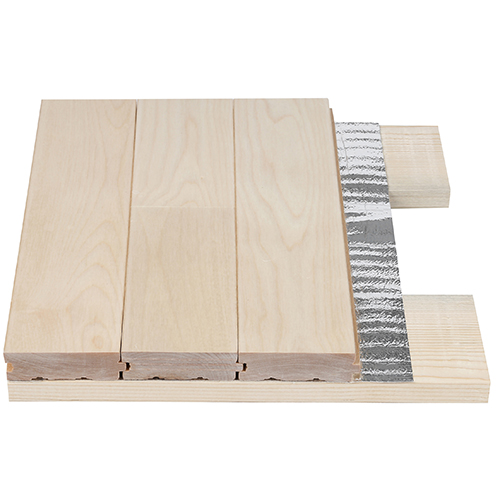With all the use your floor receives, you want a product and installation that’s durable. Hardwood flooring is a fantastic option for its incredible lifespan, as well as its stylish, modern look. Before you dive in and purchase hardwood for your home or business, you’ll want to make sure you are well informed on the product selection available. There is a vast range of hardwood characteristics and styles that could influence your purchase and understanding each is crucial.
Hardwood Sports Floor--The Plate keel Structure
This article will do a deep dive into hardwood flooring and equip you with everything you need to know for your next installation project. Let’s jump in.
What is Hardwood Flooring?
Hardwood flooring is a popular type of flooring that has been utilized for centuries. Due to its impressive durability, variety of colors, and timeless beauty, hardwood is an excellent choice for homeowners seeking a refined, rustic look.
Hardwood planks are generally installed via the fitting together of tongue and groove joints and nailing, creating a long-lasting floor that can follow the lifespan of the home.
Characteristics of Hardwood
Hardwood is a robust flooring type that comes in a variety of shapes and sizes. Before starting your installation, you should know about the differences in characteristics and what purposes they serve. According to This Old House, hardwood can be broken down into 4 factors:
- Length
- Hardness
- Thickness
- Width
Length
Hardwood boards typically come precut between 3 and 3.5 feet. For the most seamless installation possible, prioritize using longer pieces. This limits the appearance of clunky end joints that stand out. However, if you’re installing hardwood in a small room and want it to have a larger feel, cut your pieces smaller.
Hardness
The hardness of your wood is dependent on which species of tree was used during the manufacturing process. Each species has its own level of hardness, and the harder the wood, the more durable your flooring will be. Here are the various wood types, ranked from softest to hardest:
Thickness
Hardwood floor planks come in a range of thicknesses, with common sizes being ½”, 5/8”, and ¾”. In general, the thicker your wood is, the more times it can be resurfaced and refinished. This will allow you to keep your flooring’s original appearance as long as possible. Thinner wood flooring materials can still be frequently re-coated, however.
Width
Your hardwood floor material will come in either 6” wide or 2 ¼” wide planks. Wider planks have a homier aesthetic to them, but they’re also susceptible to gapping joints in dry weather. Thinner planks have a tighter fit. You can also mix these planks to receive both looks.


